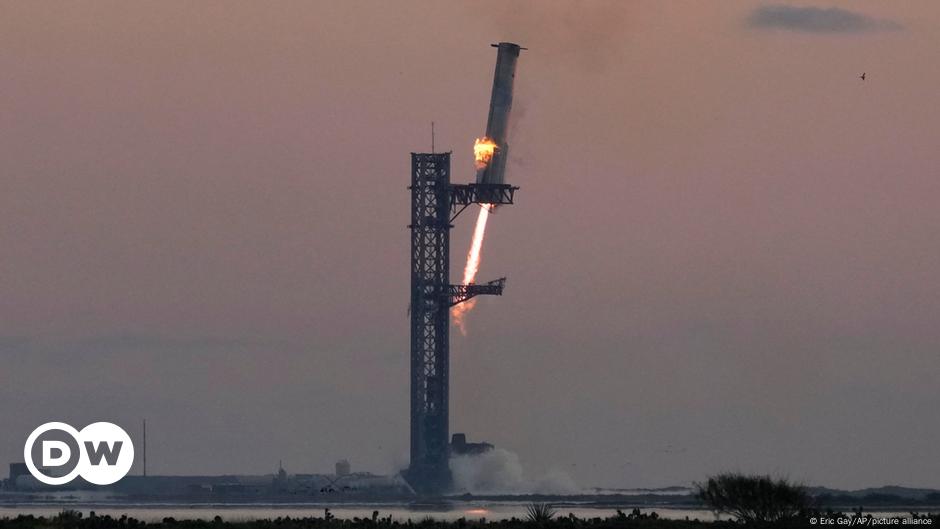Tech
SpaceX ‘catches’ megarocket booster with metal arms – DW – 10/13/2024

In its fifth Starship test flight on Sunday, SpaceX captured the rocket’s towering first stage booster after it hovered back to the launching pad to be secured by giant metal arms.
It marks a novel engineering feat in the SpaceX’s ambitions to build a reusable moon and Mars vehicle.
Standing at almost 400 feet (121 meters), the empty Starship lifted off at sunrise from the southern tip of Texas, heading towards the Gulf of Mexico.
During the Sunday launch, the risks were even higher then the during the previous four tests. The company used mechanical arms, dubbed chopsticks, to bring the 232-foot (71-meter) booster back to land at the pad.
“The tower has caught the rocket!!” SpaceX founder and CEO Elon Musk posted on X, formerly Twitter. “Science fiction without the fiction part.”
He later posted: “Big step towards making life multiplanetary was made today.”
“Splashdown confirmed!” the official X account for SpaceX posted. “Congratulations to the entire SpaceX team on an exciting fifth flight test of Starship!”
“Even in this day and age, what we just saw is magic,” SpaceX’s Dan Huot observed from near the launch site. “I am shaking right now.”
“Folks, this is a day for the engineering history books,” added SpaceX’s Kate Tice from SpaceX headquarters in California.
The novel catch-landing approach is the latest advance in SpaceX’s test-to-failure development campaign for a fully reusable rocket designed to take more cargo into orbit, take humans to the moon for NASA and the ultimate mission of going to Mars.
FAA and Space X tensions
The United States’ Federal Aviation Administration (FAA) on Saturday gave the green light for SpaceX’s launch license for the Starship test. The approval from the FAA came after weeks of wrangling between the space exploration corporation and its regulator over the pace of launch consent and financial penalties related to Space X’s workhorse rocket, the Falcon 9.
First unveiled by Musk in 2017, Starship has exploded several times in various stages of testing, but successfully completed a full flight in June for the first time.
The two-stage rocket’s Super Heavy booster lifted off near the Mexican border in Texas sending the second stage — Starship — on a near-orbital path bound for the Indian Ocean some 90 minutes later, acing an explosive hypersonic reentry.
jsi/dj (AP, AFP, Reuters)









/static.texastribune.org/media/files/f5fdb1dff4d6fd788cba66ebaefe08d0/Paxton_GOP_Convention_2018_BD_TT.jpg)